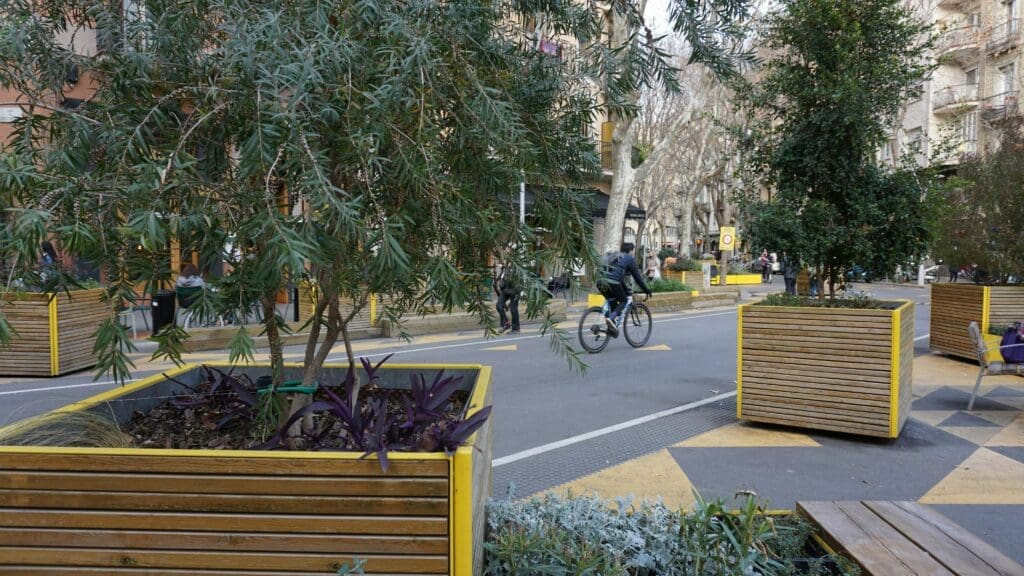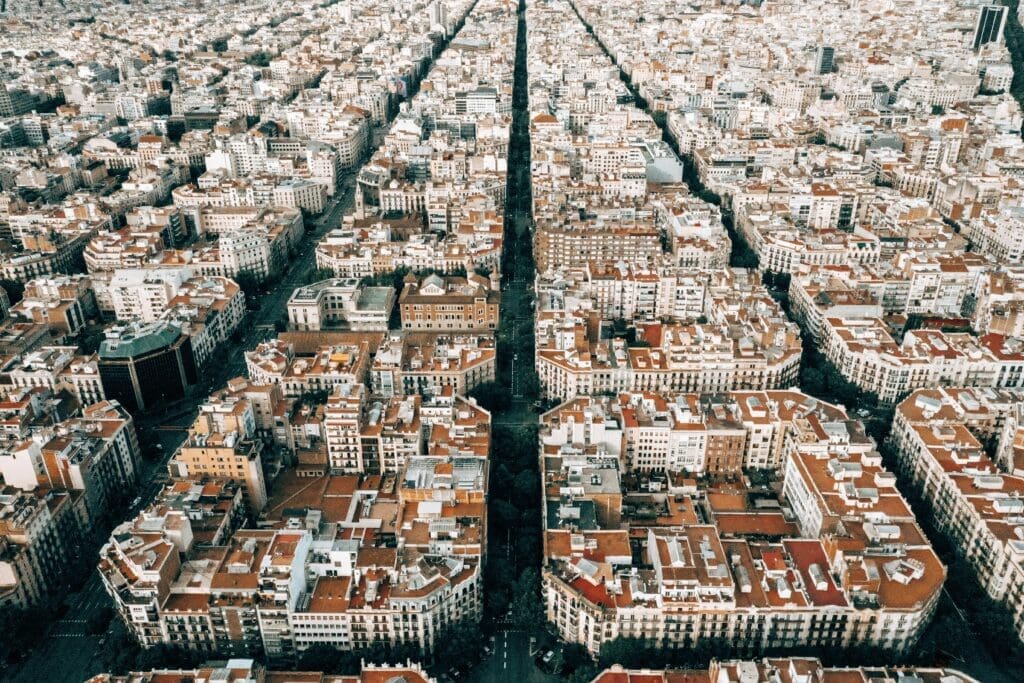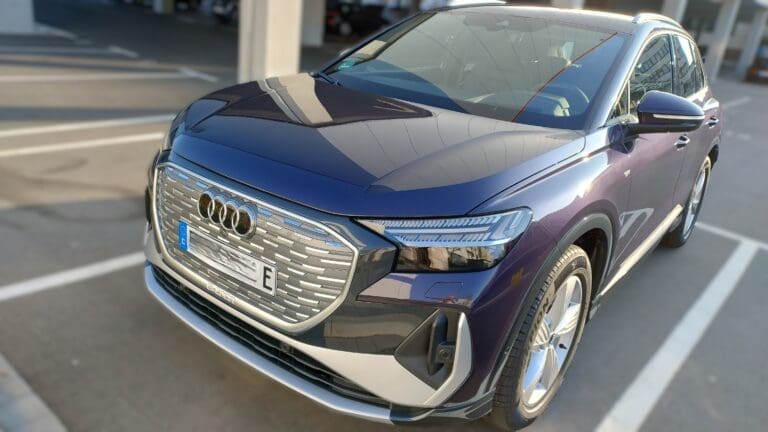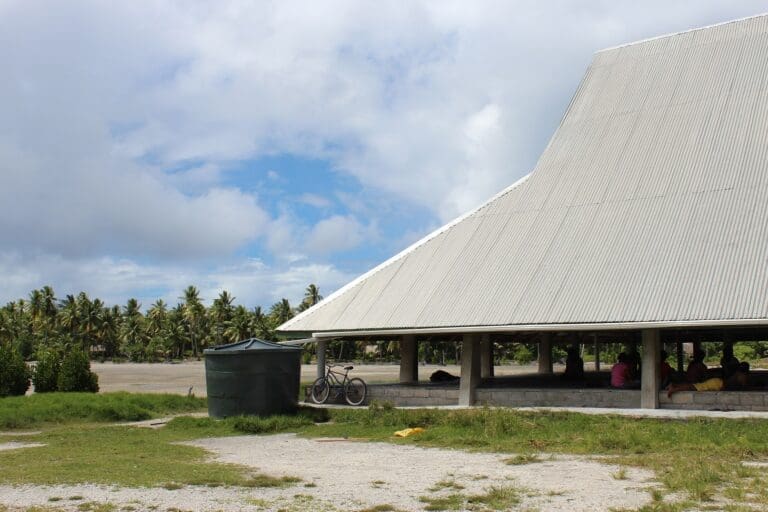In the heart of Barcelona, a radical urban transformation is taking place, one that aims to reimagine the city’s streets and redefine the way its inhabitants move around. This ambitious project is known as the Superblocks, a revolutionary initiative that seeks to transform Barcelona into a more sustainable, livable, and people-centric metropolis.

Yellow dashed line: Residents’ vehicles, urban services and emergency vans only, pedestrians, cyclists etc.
Red solid line: main traffic incl. public transport, outside of superblock, one-way systems are recommended
Green “blobs”: Green squares with trees, sitting areas, playgrounds etc.
The Idea Behind Superblocks
The Superblocks concept emerged as a response to Barcelona’s growing traffic congestion and environmental concerns. The idea is to reorganize the city’s grid-like street layout into a network of 400 m x 400 m (¼ mi x ¼ mi) superblocks, based on 3 x 3 smaller individual blocks. These superblocks act as self-contained neighborhoods, with car traffic limited to a perimeter road, allowing for the creation of pedestrian-friendly zones and a more harmonious coexistence between cars, cyclists, and pedestrians.[1]
Key Features of Superblocks
Each superblock features a central plaza or park, serving as a hub for community life. The perimeter road is designed to facilitate efficient vehicular circulation around the superblock, while the inner streets are transformed into car-free zones, encouraging walking and cycling. To further promote sustainable transportation, the Superblocks include designated bike lanes and electric vehicle charging stations.[1][2]

Impact on Mobility and Air
The implementation of Superblocks has already yielded significant positive outcomes in Barcelona. Traffic congestion has decreased by up to 40% within the superblocks, while pedestrian and cyclist traffic has increased by 20% and 30%, respectively. The reduction in cars has also led to improved air quality, with noise levels decreasing by 30% and the concentration of harmful pollutants falling by 18%.[3]
A study conducted by Barcelona’s Urban Ecology Agency found that the average temperature in Superblocks was 0.4 degrees Celsius lower than in surrounding areas. This cooling effect is attributed to the reduced presence of cars, which produce heat and trap it in the urban environment. The increased green spaces and shade provided by trees within Superblocks also contribute to the cooler temperatures.[3]
While the cooling effect of Superblocks is modest, it is still a significant benefit, particularly in the context of urban heat island (UHI) effects. UHI is a phenomenon in which urban areas are significantly warmer than surrounding rural areas due to the abundance of concrete, asphalt, and other heat-absorbing materials. See also the dedicated article on Urban Heat Islands: Causes, Impacts, and Countermeasures.
Superblocks help to mitigate UHI effects by reducing the urban heat load and creating more livable and comfortable urban environments.[3]

Economic and Social Benefits
In addition to its environmental benefits, the Superblocks initiative has also fostered a sense of community and social cohesion within the neighborhoods. The creation of pedestrian-friendly zones has encouraged residents to spend more time outdoors, creating a more vibrant and interconnected urban fabric. The Superblocks have also become popular gathering spaces for local events, festivals, and markets, further enhancing the quality of life for Barcelona’s residents.[4]
Challenges and Opportunities
While the Superblocks project has been met with enthusiasm from many, it has also faced some challenges. Some residents have expressed concerns about the potential increase in noise from pedestrian and cyclist traffic, as well as the disruption caused by the construction of new infrastructure. Additionally, the limited car access within the superblocks has raised concerns about accessibility for residents who rely on cars for mobility.
These challenges have led to ongoing discussions and adjustments to the Superblocks project. Ada Colau, Mayor of Barcelona from 2015 until 2023, a strong proponent of the initiative, has emphasized the importance of addressing these concerns and ensuring that the Superblocks are designed to meet the needs of all residents.[4][6]
Current and Future Number of Superblocks
Total number of implemented Superblocks across Barcelona is 13.[7] Overall, it is planned to have 503 Superblocks all over the city. On top of that, all major avenues are to become walking areas.[5]
Sources:
[1] https://kleinmanenergy.upenn.edu/research/publications/superblocks-barcelonas-plan-to-free-itself-from-cars/
[2] https://www.citiesforum.org/public-realm/superblock-superilla-barcelona-a-city-redefined/
[3] https://www.c40.org/case-studies/barcelona-superblocks/
[4] https://www.barcelona.cat/pla-superilla-barcelona/en/barcelona-superblock
[5] https://www.who.int/news-room/feature-stories/detail/barcelona-using-urban-design-to-improve-urban-health
[6] https://www.catalannews.com/society-science/item/barcelona-to-continue-boosting-superblocks-and-cycle-Landes-sagt-Bürgermeister-bei-cop26
[7] https://ajuntament.barcelona.cat/superilles/en/#








